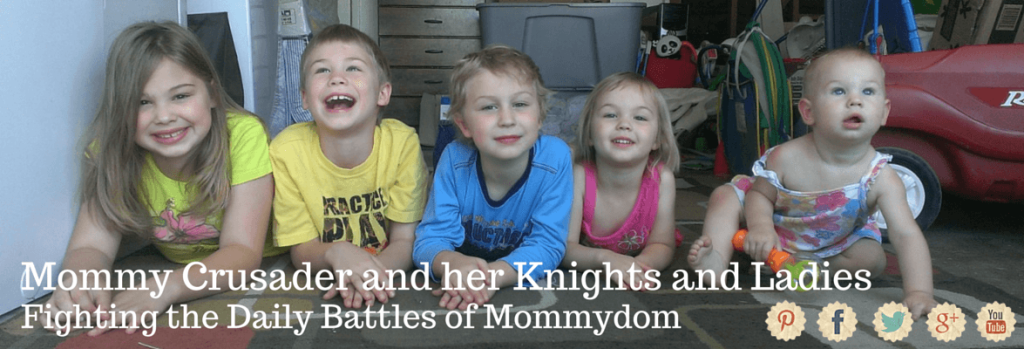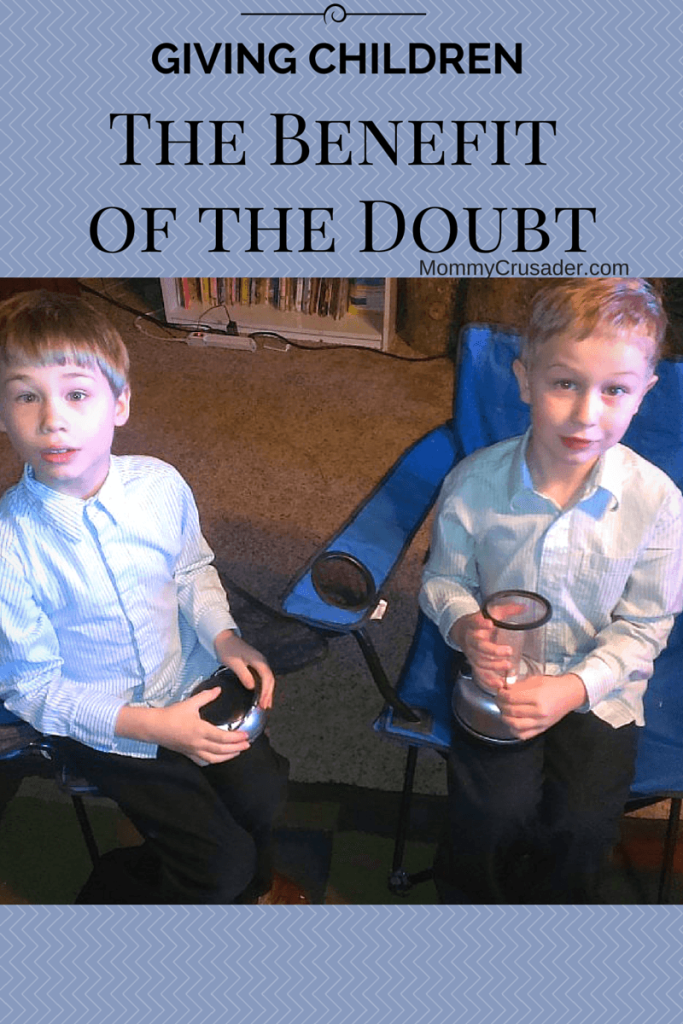We’ve all been there. Someone has misunderstood our intentions or actions, and is really mad at us. It’s a really uncomfortable place to be. We feel sad and angry and our willingness to listen to what the other person diminishes greatly. Now, if the person who’s upset with us is our employer, supervisor, or spouse – those feelings are compounded. Imagine then how our children feel when we do this to them. Sometimes, it helps to give them the benefit of the doubt before we start “talking at” them.
I wrote “’talking at’ them” because the feelings involved in the described situation are too powerful on both sides to allow for much discussion. These feelings also keep the children from being able to learn or understand what needs to be changed. And honestly, I’ve found I’m the one who’s in the wrong. I’m the one who hasn’t understood my children’s intentions or actions. I’m the one who has been willing to “jump the gun” and assume the worst of my children in certain situations.
When these situations come up, it’s really important to remember the understanding and abilities of the children as well as how they understand the situation. In a perfect world, I would act instead of react to my children’s behavior.
So, here are some principles I’m going to focus on so I can begin giving children the benefit of the doubt.
Principle One: Listen, completely and effectively
Listening involves not only hearing the words said, but understanding the messages behind the words. Sometimes the message can be “Hey, look how far I’ve come” and sometimes the message is “I’m really scared right now.” Those aren’t the words spoken; they are the feelings and emotions behind the words. For example: When my daughter tells me that, yet again, she has another ouchy, I know there’s more to the message than just a bumped knee. It’s my job as a Mommy to make sure that I’ve listened to all the messages shared. The more important messages aren’t the actual spoken words, but the other messages behind the words. In this case, the ouchies are actually code for my daughter wanting more of my attention.
Principle Two: Ask clarifying questions
Often, I assume I know what the situation is after just a brief glance. And more often than not, I act on that assumption. And equally as frequently, I am totally wrong. Instead of assuming that I am omniscient, I need to ask the children what has happened. I need to have them tell me the story, and while they are telling me the story, I need to apply principle one. It is so easy to think I understand a situation, when really I don’t. One time during our homework time, my son kept popping out of his chair. He wouldn’t stay seated. I thought it was because he didn’t want to do homework, and so I called him out on that “fact”. After I was done saying my say, he looked at me and said, “But Mommy, there’s something poking me in my chair.” I found out that the reason he kept popping out of his chair was because, somehow, one of my long sewing pins had gotten partially stuck in the chairs cushion. And every so often, when he shifted his weight, his backside got an uncomfortable poke.
Principle Three: Act with love and consistency
Once I have applied principles one and two, then I’ll be ready to act and not react to the situations. I’ll have enough information to know what was going on, to know what my children understood the situation to be, and to know what my children were thinking. And because I know all those things, I’ll be better able to respond appropriately to the situations. My Kindergartner is apparently going through a growing phase. I can’t give him enough food during the day. This has led to trips out of bed at night because he is uncomfortable/hungry. I didn’t understand this for almost a week and was at my wits end at what I thought was his blatant disobedience to our bedtime rules. I was getting to where, the moment I saw him out of bed, I was ready to launch into why it was time for him to be in bed. Finally, the other night, I asked him why he kept popping out of bed so many times after being tucked in. He said “I’ve been so hungry.” If that didn’t make me feel like a heel – I don’t know what will. We worked out an arrangement to help meet his need for food and my need to have my “playthings” put away so I could finish up the day and go to bed. Finally, after applying principles one and two, I was able to work with my son to find a solution that benefited us all.
It will definitely be a slower process, using these principles. But situations will be resolved in a more peaceful and kind way. And I hope, by modeling this process, my children will also learn how to give others the benefit of the doubt.



Permalink
Thanks for sharing this sweet post with us at our Share Day!
Permalink
Thank you for the opportunity and for the visit.